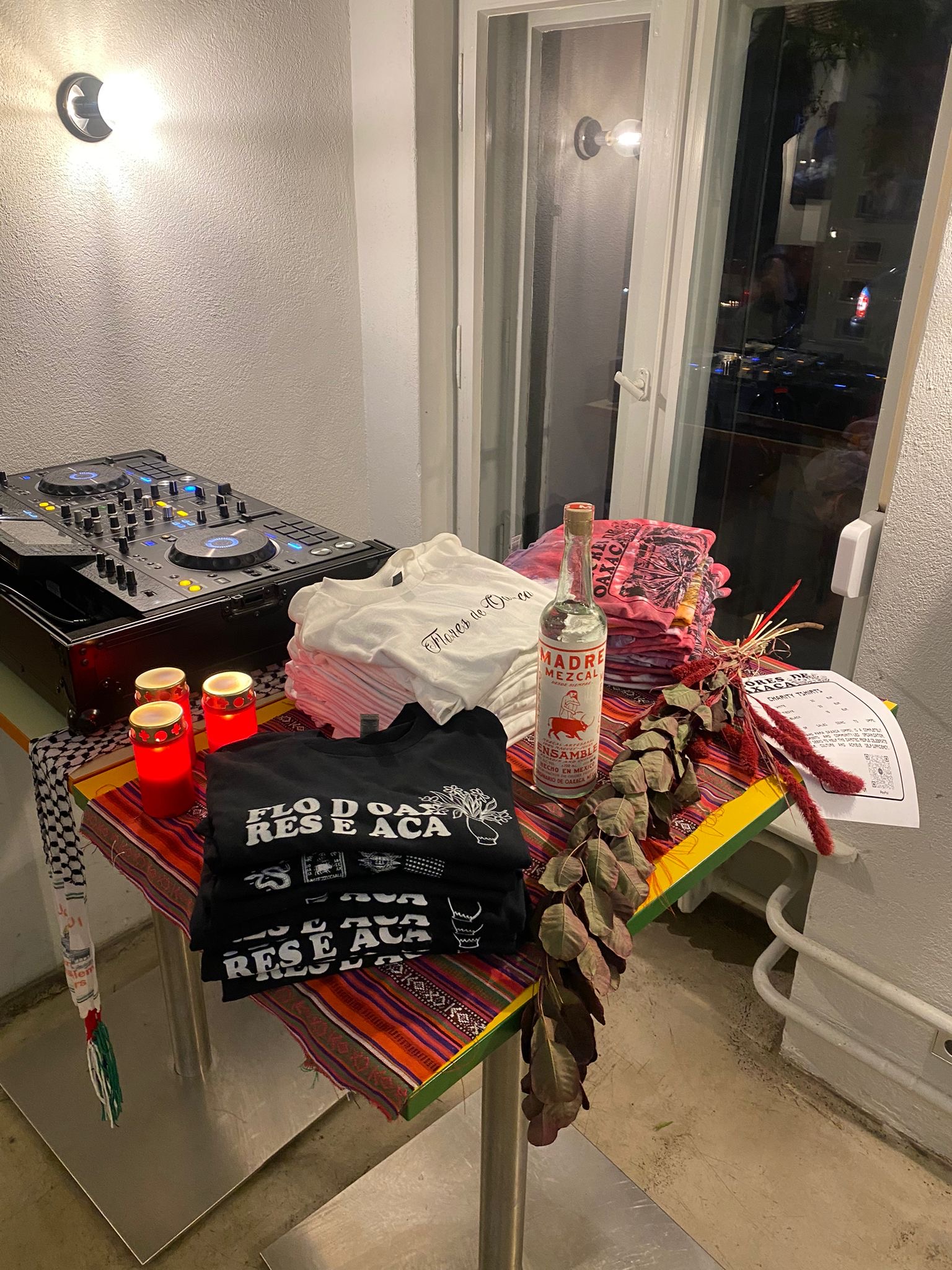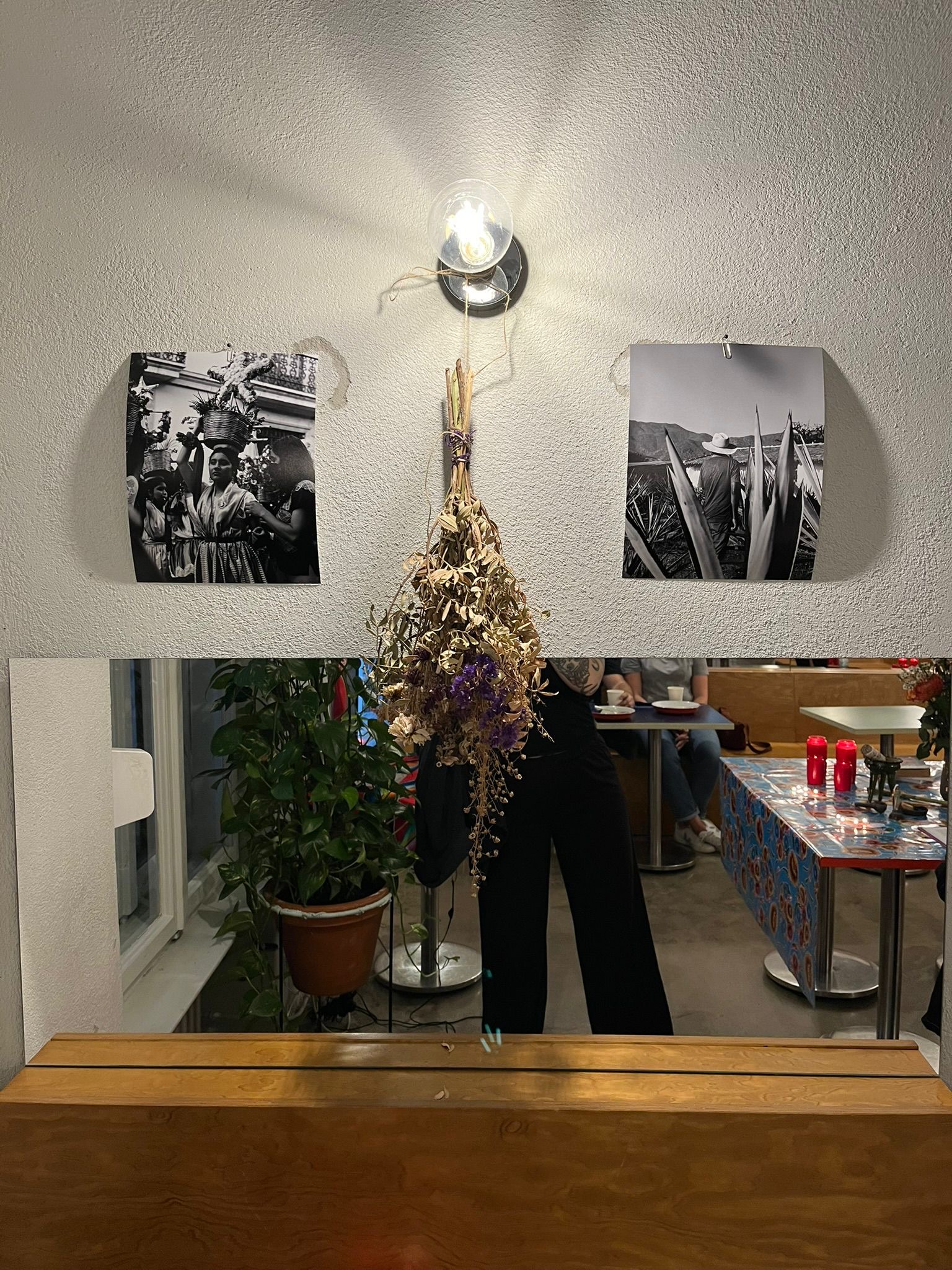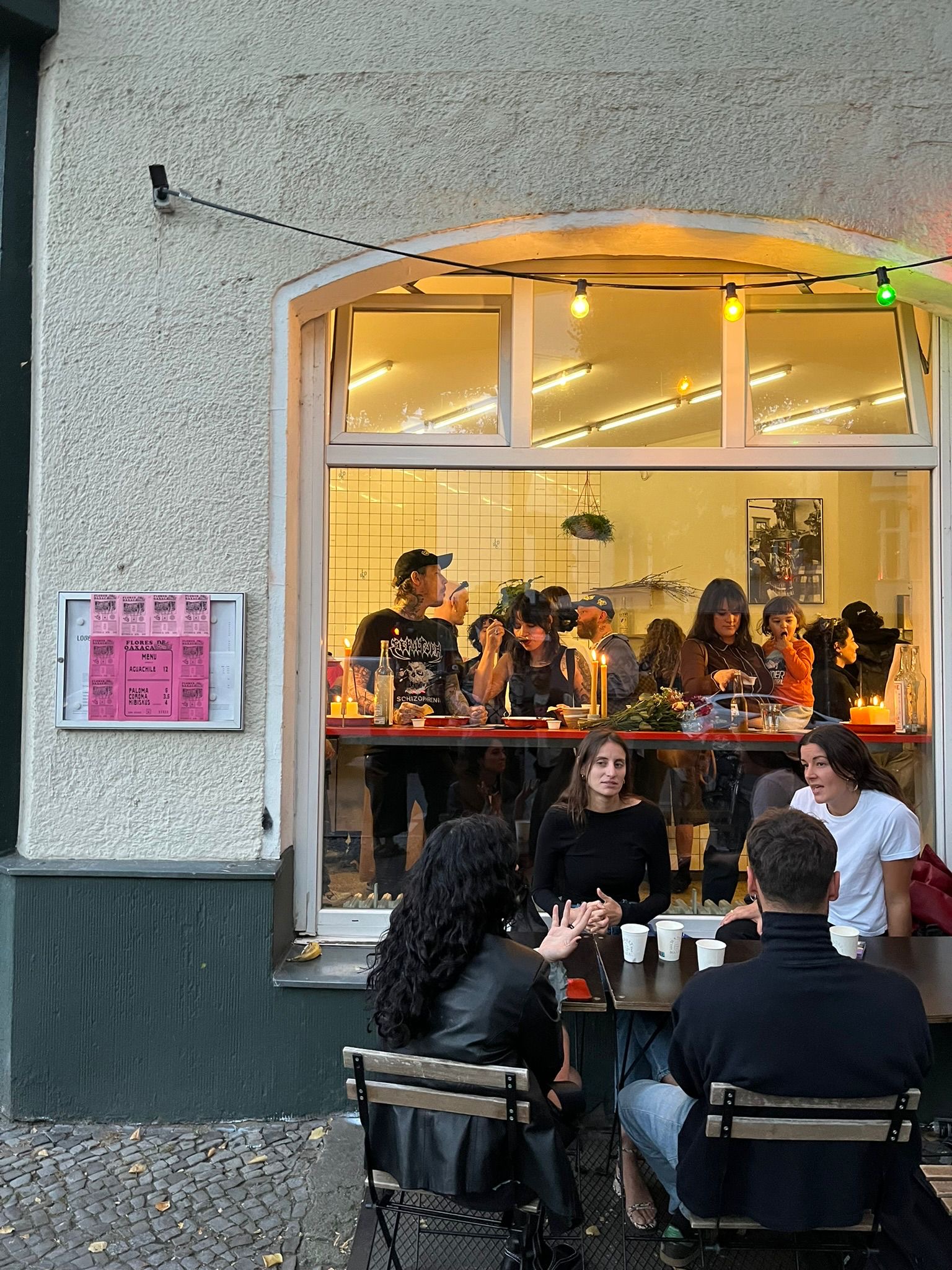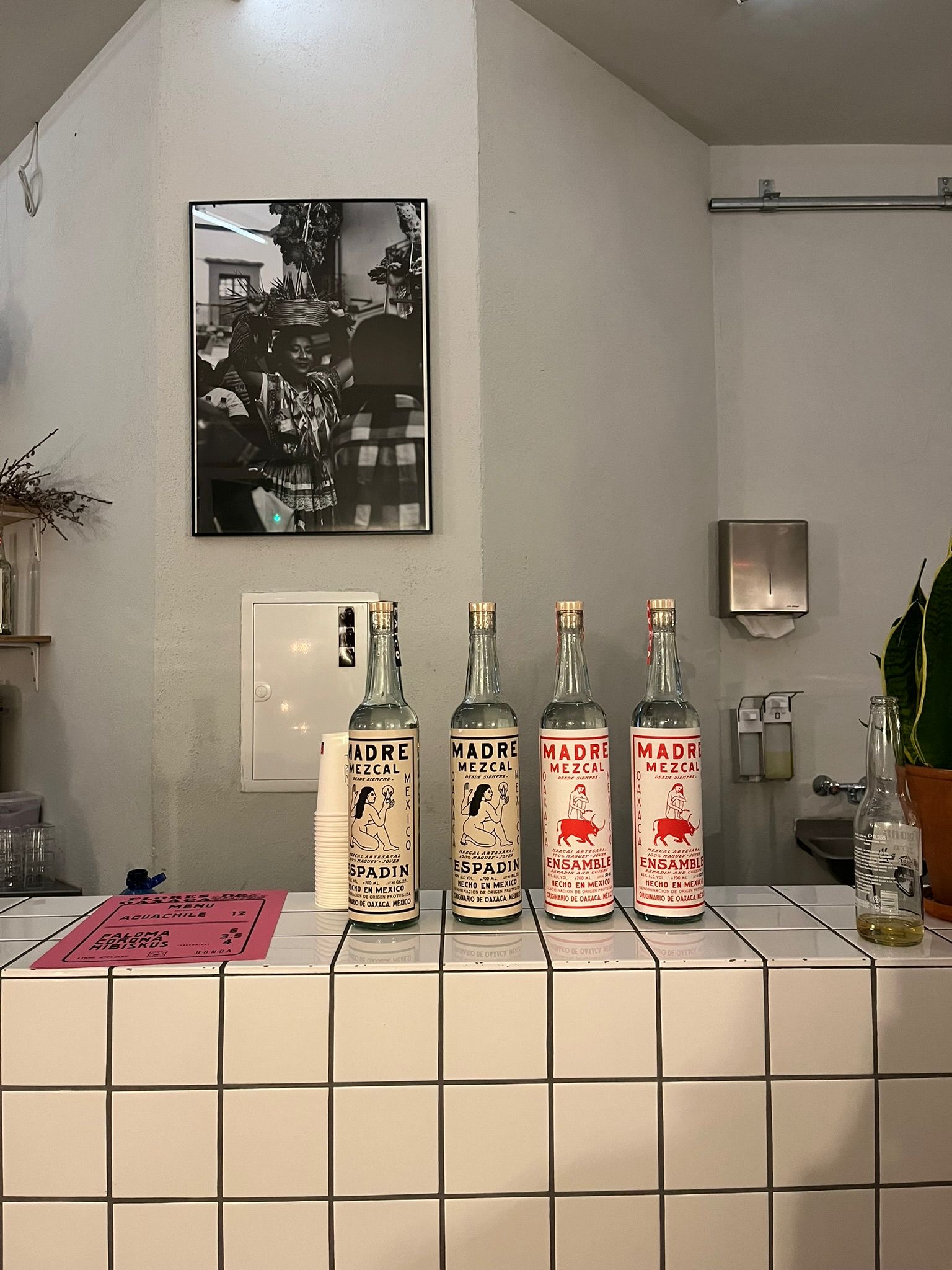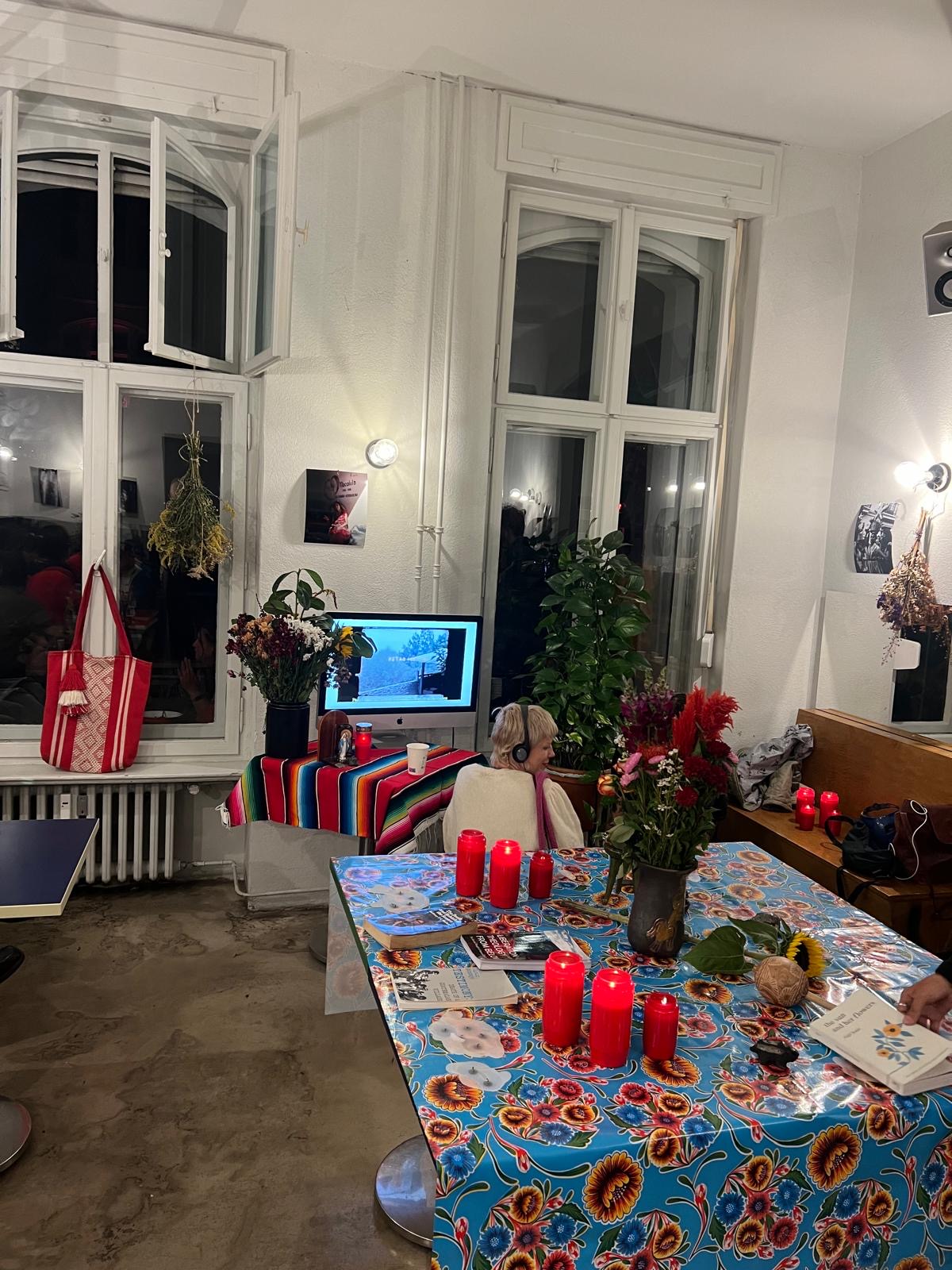Qasim and Kasper from DONDA in Copenhagen invited me to join them on a trip there. The pair are friends first and foremost, but also owners — and Qasim the head chef — of one of the best restaurants (according to me and many others) in Copenhagen, serving latin american-flavored plates with focus on the great variety of seafood, which is available all year round in Denmark. Inspired by the Mexican kitchen and all of its flavors, colors and history, a study trip to the mecca, Oaxaca, was undeniably necessary and long overdue. We went on a two week tour in February 2023, guided by Rafa and Diego. Again, friends first and foremost, but also Oaxaca natives. With them by our side we were in for an unforgettable experience.
I’ve known Qasim for more than a decade, and have worked with him in several restaurants. I’d always been waiting for him to open his own spot, where he can do exactly as he wants, blossom and show us all his undeniable talent for combining tastes, produce and execution. This happened in 2019 when he and Kasper opened up the doors to DONDA. I got to experience Qasim in his element first hand at DONDA, as I worked there until moving to Berlin. It was an instant hit and five years later, DONDA is still going strong and they have since opened a second location. Qasim’s eye for detail goes beyond the kitchen, with interior and color palettes combining everything into an unique experience for guests when visiting either of his two restaurants. The same things I saw, felt and tasted when working there also touched a lot of other people, including Rafa who as a guest was blown away after his first visit at the restaurant, so the two started a work relationship, but also a friendship that led us to going to visit Rafa in Oaxaca, where him and his partner Cat had put together a packed but unbelievable programme of restaurant and market visits in and around Oaxaca de Juarez, with stops in some of the small villages meeting some incredible humans making artisanal crafts you’ll only see there.
Rafa, at the time of meeting Qasim, had been in Denmark for a couple of years, first working and learning to bake at Meyers before moving to Sanchez, another Mexican fine dining restaurant in Copenhagen, where he brought in not only all of his knowledge, but also contacts from Oaxaca to source ceramics from Paco, who we also visited in Oaxaca, and ingredients otherwise not available — especially not in Denmark. As the story goes, not only for Rafa but for many foreigners and immigrants who seek the chance of working in some of the best kitchens in Copenhagen (and around the western world) the brutal reality is that they most likely are to be exploited for work in one way or another. The harsh and, let's be honest, disgusting reality of these kitchen and work environments is that they will take advantage of you as much as they can and if you don’t align or go against this, you’re out. This happened to Rafa, after bringing in way more than just his hands to work with. He poured his heart and soul, even family stories into this work, just to be dismissed when he injured his knee and wasn’t able to work anymore. I guess what they didn’t know or think of was that Rafa is from Oaxaca, Mexico, from Abya Yala, from a part of the world where nothing comes easy, where you learn to stand up for yourself and to fight and to survive. Like a sunflower that grows tall and strong, turning to the sun for energy and power, not even the storm of the century will break it. Rafa is like that, tall and strong, beautiful all the way through and as you do when you are knocked down, you get back up.
When we visited Oaxaca, Rafa and Cat were a month away from opening their own bakery in the center of Oaxaca de Juarez, taking the knowledge he learned from his time baking in Copenhagen and combining it with the ingredients, history and knowledge of his hometown and land. And yet he took all the time in the world to show us around, to welcome us and give us the best experience you could imagine. This speaks volumes of the person Rafa is, but in general of the people we met on our way around in Oaxaca. Hospitable is understatement. We were welcomed with open arms, smiles, care and mezcal everywhere we went, and it was nothing but an extraordinary experience all the way through.
Personally it was also the first time I set foot in an indigenous land, in Abya Yala, and the first time I truly felt like being somewhat home. Walking around the streets blending in was a surreal experience at first, but oh man did it feel good and I became accustomed very fast. My role in the trip was to document the places and people we saw and met, as I do with my camera when traveling, and on a regular basis at home as well. As mentioned earlier, Oaxaca and its people knocked me off my feet, truly. From our first encounter, Diego, our driver and local guide welcomed us in a manner you don’t see elsewhere and took us directly to Alfonsina, just five minutes from the airport, where doña Elvia have been cooking for the locals for more than 20 years. Now cooking with her son Jorge, who’s returned home after years around in some of the best restaurants in Oaxaca and Mexico (Pujol), Alfonsina is a must-visit when in Oaxaca and we couldn’t have started our time there in better hands.
Oaxaca is colorful to say the least. From the facades of the small houses in the city center, fruits and vegetables at the local markets, to immensely beautiful weaving of carpets with natural dye colors and candles in the village of Teotitlán del Valle, where Panteleon Ruiz and doña Viviana Alvarez showed and told us the history of their crafts. The colors of the earth, from the clay used by Paco, his wife, son and helpers to make their beautiful ceramics, polished with rose quartz and other stones found in the nearby river. The sound of a big band leading them, girls and women — Chinas Oaxaqueñas — dancing through the streets of the city center, with flower dresses, long braided hair, big flower arrangement carried on their head and even bigger smiles. The China Oaxaqueña symbolizes and pays respect to the working women, typically found in the city’s markets like Mercado de Abastos or the big market outside town, Mercado Tlacolula, both places you’ll see most women and girls in dresses like this; colorful, beautiful and eye-catching.
Having taken over from her mother who ran the restaurant for 60 years, Beatriz Vázquez Gómez, also known as Frida, works in one of these markets. Seven days a week, no exceptions, because, as she told us, people come there not only for her chicken mole, but also to see her. She resembles the late Mexican artist to such an extent that you could get confused, with flowers in her hair, thick drawn eyebrows and dresses, she’s the closest you’ll get to the real Frida and is the reason many tourists have the market in Ocotlan on their list when in Oaxaca.
Oh, and of course… Mezcal. Extracted from the agave plant, an ancient plant that’s been used in various ways by the American people for more than thousands years, the spirit, mezcal, is seen as a somewhat religious drink. Some plants grow for 25 years before being harvested. The traditional, ancestral way of producing mezcal is a long process that can’t be forced and because of this, and out of respect for the mezcaleros and everyone involved in the process, mezcal should be respected and drunk with that in mind.
We visited Macurichos. Like most mezcal businesses, it’s family-run, and led by maestro mezcalero Gonzalo Martinez and his brother. Macurichos is one of the rare distillers in the area who still produce using ancestral methods, including clay pot stills. As you do when visiting mezcal producers, after a tour around the compound seeing the different stages of the production, you get to taste a lot of mezcal.
At Lalocura, other than producing mezcal, they are also preserving the agave plant. Agriculture maestro Isaac, whose job is to make new agave plants from the old ones, showed us around his part of the compound, explaining how he makes new plants, how he chooses which plants to make ‘babies’ from. As with many things in the Americas, culture, arts and crafts have been and continue to be exploited and misused, with some agaves at the brink of extinction. This is the result of the western world, especially the US hands in Mexico, with big corporate liquor companies buying up small farms to produce as much as they can, to make as much money as they can. It’s a sad story but something we see happening all over the Global South and in other parts of the world as well, where there is money to gain for the whites. Luckily, here at Lalocura they are doing an incredible job in fighting against this, in order to preserve their culture and history. As they told us: “Mezcal is not a trend, it is history, it is heritage, it is wisdom, it is love. For more than 100 years it has been. We are and we will be mezcal”






